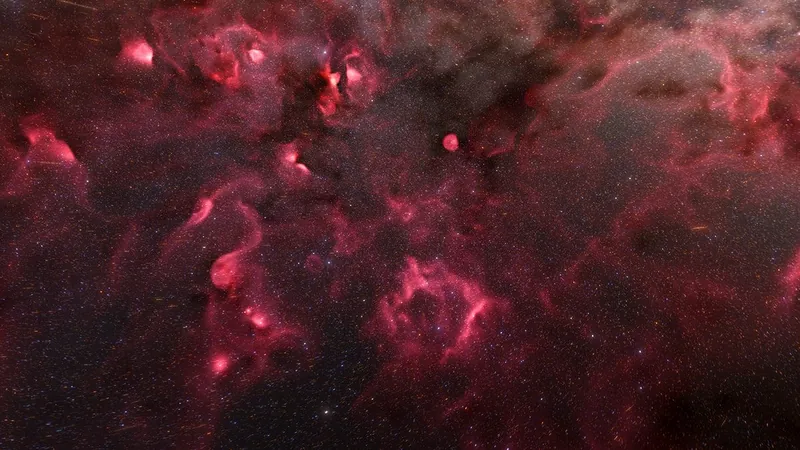
Soar Through the Milky Way: Stunning 3D Animation Reveals Our Galaxy from Above!
2025-09-17
Author: Li
Ever wondered what our Milky Way Galaxy looks like from the outside? While we drift inside this vast expanse, it might seem impossible to visualize our entire galaxy from a distant observer's perspective. But thanks to the European Space Agency's Gaia mission, we now have the most accurate 3D map of the Milky Way at our fingertips!
Unlocking the Secrets of the Milky Way
Launched in December 2013, the Gaia mission has amassed data on over one billion stars, evolving how we understand our galaxy until its conclusion in January 2025. The latest breakthrough? A mesmerizing 3D animation allowing viewers to 'fly' through star-forming regions, offering a breathtaking glimpse of the Milky Way from above.
Mapping a Cosmic Masterpiece
This remarkable 3D map was crafted using Gaia's precise measurements, including observations of starlight obscured by thick cosmic dust. This 'extinction' data helps create 3D models that illustrate where dust is spread across the galaxy, revealing hotspots where new stars are born.
By analyzing 44 million 'ordinary' stars and 87 rare, massive 'O-type' stars—bright, young stars that emit ultraviolet light—scientists can chart regions extending 4,000 light-years from our solar system, with our Sun strategically positioned at the center.
An Awe-Inspiring Cosmic Perspective
Gaia's innovations allow astronomers to track the movements and locations of countless nearby stars, resulting in stunning graphics that depict our galaxy as if seen from afar. As Lewis McCallum, an astronomer at the University of St Andrews, puts it, "Gaia provides the first accurate view of what our section of the Milky Way would look like from above." With unprecedented detail, this model associates the distribution of ionized gas with existing telescopes' observations.
Exploring the Interstellar Playground
But this 3D map is more than just a visual delight; it's a key to unlocking profound knowledge about our cosmic neighborhood. Astronomers are uncovering the interactions between massive stars and the gas in our galaxy, observing phenomena like star-forming clouds breaking open to create vast cavities. Sasha Zeegers, an ESA Research Fellow, emphasizes, "The 3D model illustrates how radiation from massive stars ionizes the surrounding gas and dust, revealing insights about our local galactic environment."
The Future of Galactic Mapping
With aspirations to push the boundaries even further, scientists plan to extend this incredibly detailed map, requiring immense computational power to explore areas beyond the current 4,000 light-year limit. As Johannes Sahlmann, ESA’s Gaia Project Scientist, notes, upcoming releases of high-quality data promise even greater advances, paving the way for deeper insights into star-forming regions and the universe's mysteries.
Get ready to explore the wonders of our galaxy like never before—this is just the beginning of our celestial adventure!




 Brasil (PT)
Brasil (PT)
 Canada (EN)
Canada (EN)
 Chile (ES)
Chile (ES)
 Česko (CS)
Česko (CS)
 대한민국 (KO)
대한민국 (KO)
 España (ES)
España (ES)
 France (FR)
France (FR)
 Hong Kong (EN)
Hong Kong (EN)
 Italia (IT)
Italia (IT)
 日本 (JA)
日本 (JA)
 Magyarország (HU)
Magyarország (HU)
 Norge (NO)
Norge (NO)
 Polska (PL)
Polska (PL)
 Schweiz (DE)
Schweiz (DE)
 Singapore (EN)
Singapore (EN)
 Sverige (SV)
Sverige (SV)
 Suomi (FI)
Suomi (FI)
 Türkiye (TR)
Türkiye (TR)
 الإمارات العربية المتحدة (AR)
الإمارات العربية المتحدة (AR)